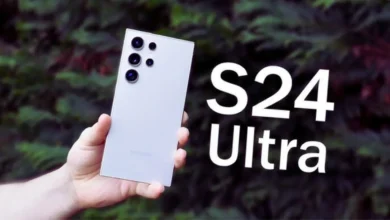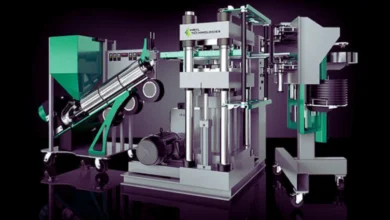Technology Aesthetics in Modern Design And Interfaces

In today’s world, the “technology aesthetic” concept goes far beyond minimal bezels or metallic finishes—it’s a deeper blend of utility and design elegance. This modern philosophy influences everything from app interfaces to wearable tech, where each element is crafted not just to function, but to feel intuitive and visually coherent. As design thinking and engineering evolve together, the lines between art and technology blur, giving rise to products that are not only useful but emotionally engaging. The aesthetic experience forms a crucial interaction layer, shaping perception and satisfaction in everyday digital use.
From glowing edge lighting in smartphones to the responsive animations in software dashboards, aesthetic choices speak louder than ever. The evolution of modern interfaces isn’t just technical—it’s personal, visual, and cultural. As designers and developers align to create fluid experiences, technology becomes more approachable and elegant. This aesthetic transformation isn’t a trend; it’s a new standard for how users expect their digital environments to behave and appear.
Core Elements of Technology Aesthetics
Technology aesthetic blends form and function through clean interfaces, seamless interactions, and purposeful design. It emphasizes minimalism, intuitive navigation, responsive feedback, and harmonious visual elements. Together, these components create engaging experiences that feel both modern and human-centric.
| Element | Description |
| Minimalism | Clean lines, uncluttered interfaces, and purposeful design choices |
| Typography | Crisp fonts, clear spacing, and strong visual hierarchy |
| Color Palettes | Muted tones with vibrant accents or futuristic neon themes |
| Material Textures | Glass, brushed metal, or matte finishes are used in physical and digital design |
| Motion And Feedback | Smooth animations and responsive UI elements enhance user interaction |
These elements collectively create a consistent and emotionally resonant design experience that goes beyond functionality. Design choices signal sophistication, precision, and futuristic intent, aligning with a brand’s identity and user expectations.
Evolution Of Modern Design Trends Influenced By Technology
Over the past decade, we have seen rapid convergence between design innovation and technological advancement. Companies like Apple, Tesla, and Google have set new benchmarks where aesthetics and function are inseparable. Flat design, neumorphism, glass morphism, and brutalist web design are examples of aesthetic approaches that have evolved with new capabilities in hardware and software. The rise of high-resolution displays and powerful GPUs has empowered designers to push creative limits.
The push for more immersive user experiences has also led to the adoption of micro-interactions, dynamic scroll effects, and real-time 3D rendering in apps and websites. Design is now more experiential, adapting fluidly to screen sizes, user behavior, and context of use. This convergence has birthed a new design language—one that is flexible, responsive, and emotionally intuitive.
How Technology Aesthetics Shapes User Interfaces
A technology aesthetic prioritizes user needs while ensuring visual appeal. Modern UI/UX designers are focused on crafting seamless digital journeys. For example, minimalist icons replace text in mobile apps to reduce clutter. Adaptive design ensures that users experience continuity whether they’re on a phone, tablet, or desktop.
Color contrast, accessibility, intuitive navigation, and animation fluidity are no longer “nice to haves” but vital design requirements. These qualities ensure inclusivity while enhancing the feel of the interface.
| Aspect | Impact Of Technology Aesthetics |
| Logo And Icon Design | Simpler, sharper icons communicate clarity and modernity |
| Web Presence | Sleek, animated layouts enhance engagement and time-on-site |
| Product Packaging | Consistent with digital design—clean, informative, and user-centered |
| Tone And Typography | Matches product intent—elegant for luxury tech, bold for gaming tech |
| Cross-Platform Harmony | Ensures the brand experience remains consistent across all user touchpoints |
Branding rooted in technological aesthetics not only appeals to target audiences but also builds brand trust. The alignment of visual identity and interface design helps brands stand out in a saturated digital marketplace.
Impact On Physical Product Design And Smart Environments
The influence of technology aesthetics extends well beyond screens. Physical product design increasingly borrows cues from digital design principles, creating a unified language across both hardware and software. Think of how the sleek, minimal design of a smartwatch echoes the simplicity of its companion app. Ergonomic materials, tactile feedback, and ambient lighting are not just features—they’re part of a carefully crafted experience that makes interaction feel natural and intuitive.
Similarly, in smart homes, devices like voice assistants, smart displays, and thermostats are no longer eyesores—they’re designed to blend seamlessly with interior decor. These ambient interfaces prioritize subtlety, elegance, and ease of use, creating environments where technology supports the lifestyle without dominating it. This harmony between design and function highlights how technology aesthetics is redefining user comfort and engagement across digital and physical spaces.
Emotional Connection And Sensory Experience
The goal of a refined technology aesthetic is not merely visual beauty—it’s also about emotional resonance. Whether it’s the tactile click of a mechanical keyboard or the calming haptic feedback of a fitness band, sensory design elements increase user satisfaction. Auditory feedback, temperature control, lighting ambiance, and other sensory cues build intimacy between users and their technology. These design features foster brand loyalty by creating an emotional memory attached to a product experience.
Integration With Emerging Technologies
The aesthetics of technology are being redefined by the emergence of AI, AR, and VR. Holographic UI, gesture-based navigation, and spatial computing bring new visual vocabularies. Designers are now tasked with creating interfaces that exist in three-dimensional or augmented spaces. Wearable tech, implantables, and smart fabrics are also driving new forms of interface design, where the aesthetic must adapt to new materials and human interaction models.
Challenges In Maintaining Aesthetic Consistency Across Platforms
A significant challenge lies in maintaining a unified aesthetic across diverse ecosystems. With countless variations in hardware performance, operating systems, and screen resolutions, achieving visual and functional consistency becomes increasingly complex. Designers must carefully balance their creative vision with structured design systems, scalable components, and responsive frameworks that adapt fluidly across platforms. Ensuring a cohesive experience, whether on mobile, desktop, or wearable tech, requires rigorous testing and constant iteration.
Another layer of complexity stems from regional and cultural aesthetic preferences. What feels modern and clean in North America or Europe may seem overly minimal or impersonal in parts of Asia or Africa. To stay relevant and engaging, brands must often localize color palettes, typography, and even interaction styles, without compromising their core identity.
Future Directions Of Technology Aesthetics
The future is likely to see fuIt’s conceivable that physical and digital aesthetics will continue to merge in the future. Flexible displays, e-ink surfaces, and sustainable materials will redefine form factors. Personalization will also dominate—users will have the ability to switch aesthetic modes based on mood, context, or accessibility needs. Moreover, ethics and data privacy will influence aesthetic choices. Designs will need to signal transparency and trust visually, requiring a new grammar of aesthetic language in the digital sphere.
Wrapping Up
The rise of the technology aesthetic marks a shift toward more immersive and user-conscious design across every digital experience. It’s no longer enough for a device or interface to simply work—it must also feel right in the user’s hand, on the screen, or within the space it occupies. Visual coherence, subtle animations, clean typography, and spatial fluidity have become integral to product success. Designers and engineers are collaborating like never before, blending creativity with code to produce interfaces that resonate emotionally.
From wearable tech to smart environments, aesthetic decisions now shape how we perceive innovation. It’s a move from sterile functionality to expressive, dynamic interaction. The texture, the sound—all these design layers now influence trust and usability. Aesthetics isn’t superficial; it’s the digital personality users meet first. In a hyper-connected era, it’s the aesthetic that makes technology feel truly human.
FAQs about Technology aesthetic
What is meant by technology aesthetic?
The deliberate design and visual coherence found in both digital and physical tech items are referred to as technology aesthetics. It blends form and function to produce experiences that are not only practical but also emotionally resonant. This includes the structure, interface layout, feedback animations, and material choices used in both software and hardware. It places a strong emphasis on the user journey’s simplicity, consistency, and attractiveness.
How does technology’s aesthetic affect user experience?
The aesthetic design of a product significantly impacts how users perceive, engage with, and trust technology. A well-crafted aesthetic makes a product intuitive, encouraging users to use features with confidence. From typography and spacing to transitions and color schemes, each element contributes to overall usability. When a design is cluttered or inconsistent, it leads to confusion, hesitation, and user drop-off.
What industries benefit the most from technology aesthetics?
Multiple industries rely on technology aesthetics to deliver superior user engagement and satisfaction. Consumer electronics, automotive design, gaming, fintech, and healthcare are leading examples. For instance, Tesla cars feature sleek dashboard interfaces that complement their futuristic exteriors. In fintech, apps like Paytm or Revolut use clean graphics and motion design to make financial services feel simple and secure.
Is technology aesthetic limited to digital screens?
Not at all. Technology aesthetic expands well beyond digital interfaces and screens. It affects how wearable technology, smart appliances, gadgets, and environmental interfaces are physically designed. For example, the matte finish of a laptop, the subtle vibration of a smartwatch, or the ambient glow of a smart speaker all contribute to aesthetic perception. Even voice assistants like Alexa are designed to feel non-intrusive and pleasant through shape, sound, and light.
What role does personalization play in modern technology aesthetics?
Personalization is a cornerstone of today’s technology aesthetic. Users expect devices and apps to reflect their tastes and needs. Features like dark mode, custom themes, adjustable typography, and layout configurations enhance comfort and identity. AI-driven suggestions and adaptive interfaces further refine this experience, making technology feel like a personal assistant rather than a static tool.
What are some popular design trends in technology aesthetics?
Current trends in technology aesthetics include minimalism, glassmorphism, skeuomorphism revival, and brutalist digital design. Minimalist interfaces emphasize clarity through clean lines, soft colors, and ample whitespace. Glassmorphism brings semi-transparent layers and frosted effects that feel modern and light. On the other end of the spectrum, brutalist design uses purposeful clutter, harsh textures, and bold typography to create a statement.
What challenges do designers face in implementing technology aesthetics?
One major challenge is maintaining design consistency across various devices, platforms, and screen sizes. With so many user environments, from mobile phones to smart TVs, scaling aesthetic principles while preserving usability is complex. Designers must work within technical limitations, like processing power or screen resolution, without sacrificing beauty or function.



